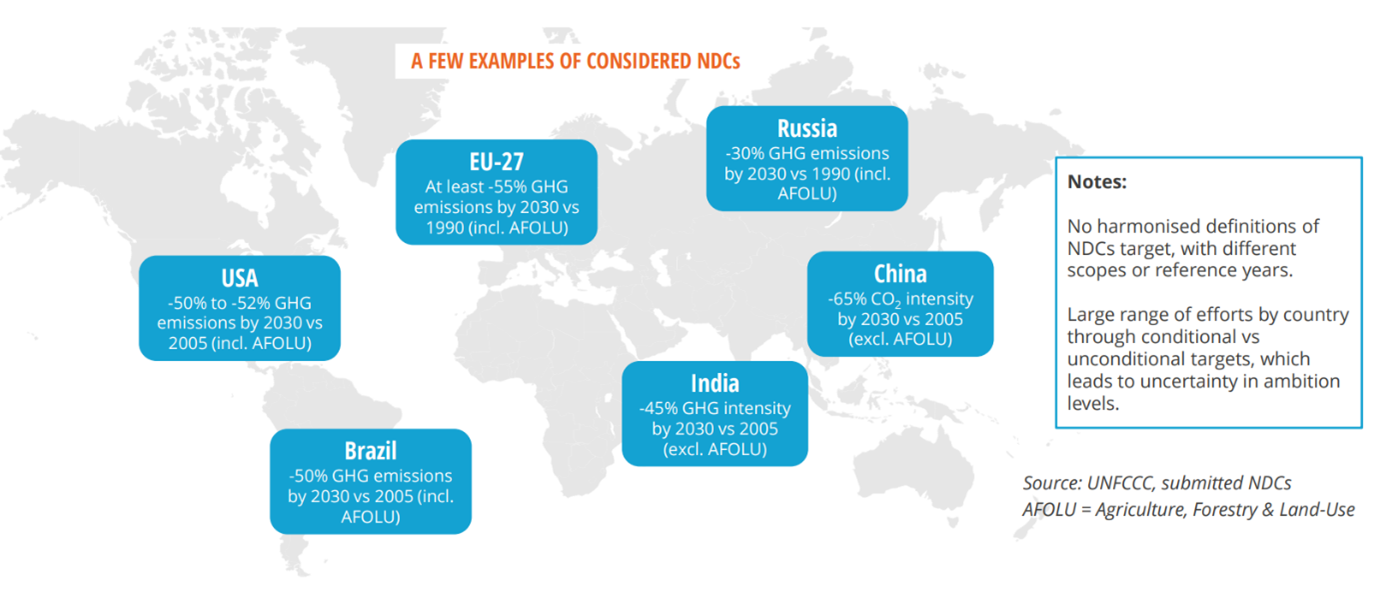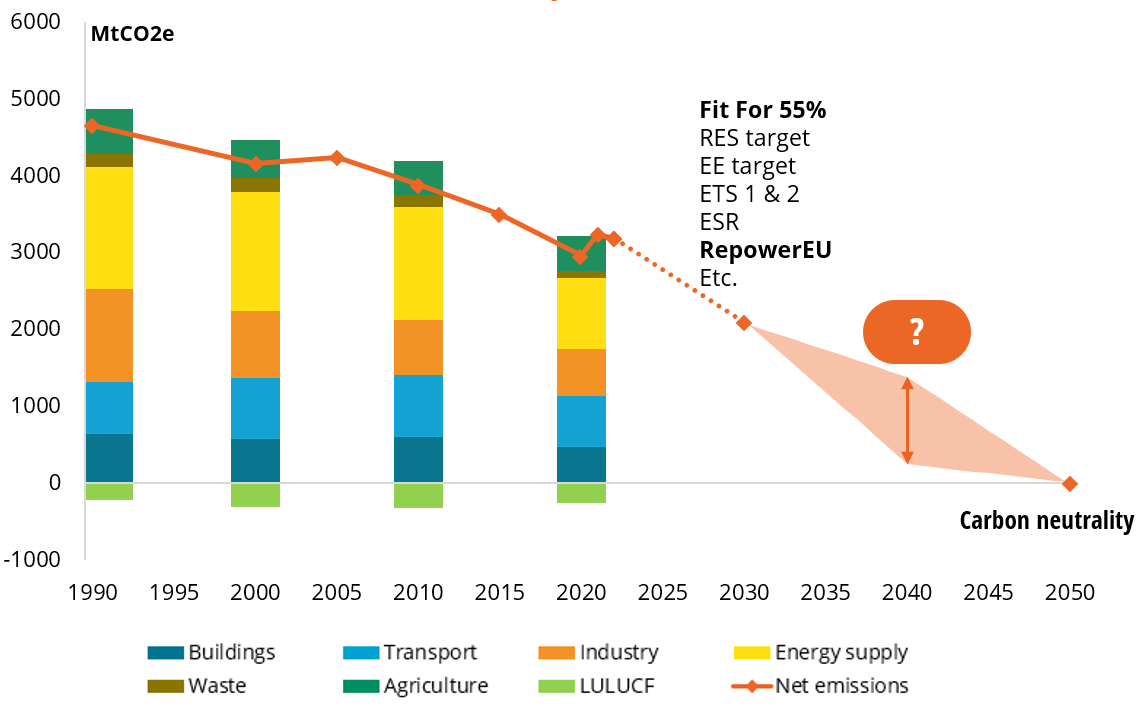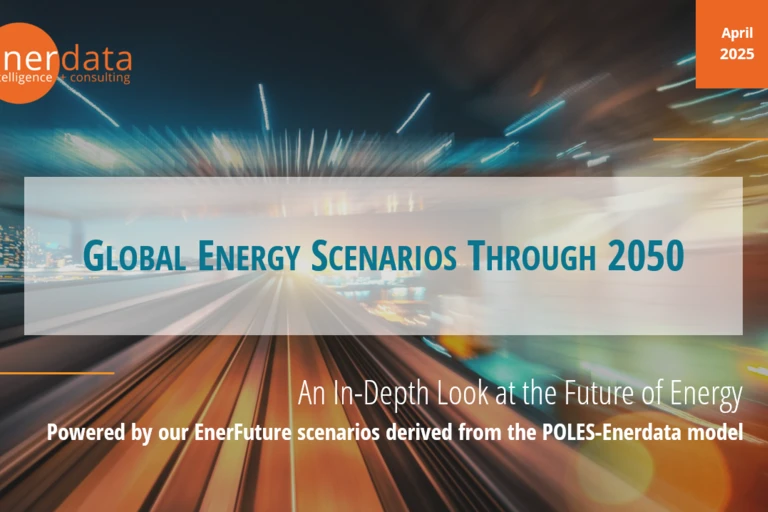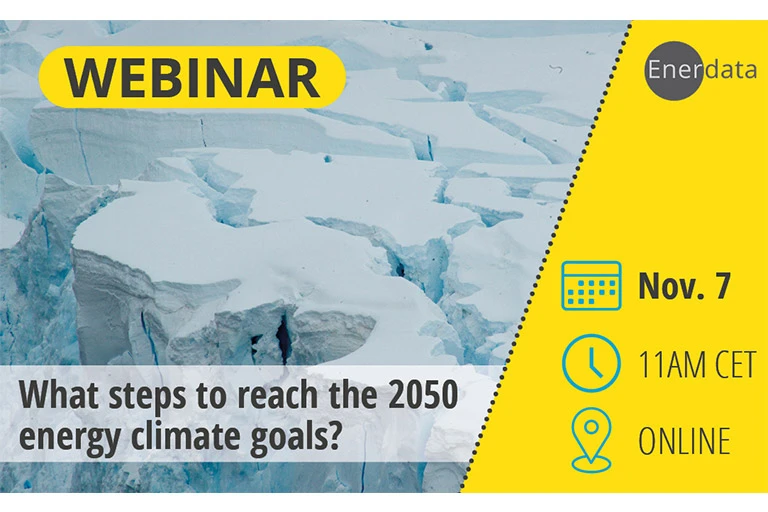Request the full presentation (FREE)
To reach the climate goals limiting the global warming under +2°C, each country or region has revealed their plans and policies for 2030, e.g. RePower EU. Consequently, policymakers are currently concentrating on crafting goals for the 2040 and 2050 periods. Once these objectives are outlined, the challenge becomes identifying the most effective strategies to achieve them. Which actions should be the top priority in reaching our long-term goals?

The Enerdata methodology assesses an array of factors, including policies, technologies, historical trends, and other pivotal drivers, to construct plausible scenarios for energy demand and associated greenhouse gas emissions by the year 2050. These scenarios incorporate a comprehensive analysis, encompassing the transition from fossil fuels, alterations in energy consumption patterns, and the diverse contributions made by various economic sectors towards the emission reduction.
First, a global picture of 2050, summarising what would a « well below 2°C » world look like:

Then, the analysis addresses the following topics:
- What pace of transition from fossil fuels is necessary to achieve our global climate ambitions?
- How must our energy consumption patterns transform to align with our climate commitments?
- To what extent are different economic sectors contributing to the reduction of greenhouse gas emissions?
- What are the imminent priorities on the agenda for European Union policymakers in this context?
Indeed, the European Union has set an emission reduction target of - 55% by 2030 and a net zero target for 2050. Numerous policies and objectives have been set up for 2030 as well as the goal of carbon neutrality for 2050. But what are the objectives for 2040?

Source: EnerFuture, Enerdata
 Energy and Climate Databases
Energy and Climate Databases Market Analysis
Market Analysis
